Old mining risks yield to new concerns
Survey shows social license, future of workforce, carbon footprint are more pressing than costs, political instability North of 60 Mining News – December 1, 2019
Last updated 9/26/2020 at 11:21am
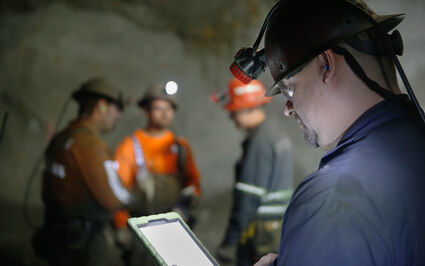
Judy Patrick; Courtesy of Hecla Greens Creek Mine
A remote operator references his tablet at Hecla Mining's Greens Creek silver mine in Southeast Alaska. Digital and data optimization ranked third on EY Global Mining and Metals' annual risk radar for mining and metals.
As the year winds down, mineral industry evaluations for 2019 are being published at a rapid rate. One of the most interesting such global reviews is EY Global Mining and Metals' annual "risk radar" for mining and metals, outlining what mining companies perceive as the top ten risks facing them in the near future.
This publication stated that, for the second straight year, "social license to operate" remains the number one risk facing mining companies in 2020. This was followed by "future of the workforce", "digital and data optimization", "reducing carbon footprint" and "high impact risks" rounding out the top five.
As in recent years, the risks perceived are trending away from traditional risk arenas, such as cost of operations (No. 10 this year), political instability (not in top 10 this year) and growing reserves (No. 8 this year).
The importance of social responsibility and stakeholder concerns continue to grow. Concern over our future workforce provided some interesting concepts. Most important was the fact that 42 percent of mining companies indicated they want to grow their workforce, with 31 percent indicating no change in workforce size and only 6 percent who indicated a decrease in their workforce. This anticipated demand on the workforce highlights a growing realization that finding new workers is going to be increasingly difficult because of the mining industry's increasingly tarnished image around the globe.
INTERIOR ALASKA
Kinross Gold announced third quarter 2019 results from the Fort Knox mine near Fairbanks. The mine produced 54,027 ounces of gold at a cost of US$1,130/oz in the second quarter versus 51,984 oz of gold at a cost of US$1,015/oz in the year previous period. Production was higher compared with the same period in 2018 mainly due to an increase in ounces recovered from the heap leach pads and higher mill grades, partially offset by a planned decrease in mill throughput. Cost of sales per ounce sold was higher compared with the previous quarter and prior year primarily due to the higher maintenance costs and a planned mill liner replacement. The mill treated 2.1 million metric tons of ore grading 0.52 grams of gold per metric ton with a mill recovery of 83 percent. The heap leach saw additions of 5.25 metric tons of ore grading 0.21 g/t gold. Meanwhile at the Gilmore expansion project, construction of the new Barnes Creek heap leach pad is 50 percent complete. Beginning in 2020, the company anticipated loading of approximately 5 percent of the Gilmore ore on the existing Walter Creek heap leach pad with the remaining 95 percent going to the new Barnes Creek pad. The mine also announced that it had received one of the prestigious Sentinels of Safety Awards from the Federal Mine Safety and Health Administration, one of only 20 such awards given to over 2,900 qualifying mines in the United States. The mine received the award because its 600 employees worked 1.5 million man-hours without a lost time accident in 2018. As National Dept. of Labor statistics show, you are safer at an operating mine like Fort Knox that you are in your own home. Congratulations to everyone at Fort Knox for this well-deserved award!
Northern Cobalt Ltd., who announced a name change to Resolution Minerals Ltd. and Millrock Resources Inc. announced ongoing results from the latter's Goodpaster gold project in the Goodpaster District. The company indicated that road construction has reached priority drill targets in the Aurora Creek area. This area is marked by coincident anomalous surface geochemistry, a magnetic low, and a conductive rock unit outlined by CSAMT geophysics earlier in 2019. Previous drilling intersected the vertical feeder system and returned narrow intersections of 1.2 meters grading 1.71 grams of gold per metric ton. With permits already in place, a water well contractor has commenced drilling a water well to allow core drilling to commence in early 2020. The company also announced commencement of an infill extremely low frequency electromagnetic (ELF-EM) geophysics survey to refine drilling targets in the area. The company is planning a US$5 million exploration program in 2020 that will include a thorough test of drill targets established on the West Pogo prospect area. The partners indicated that they have entered into a Shared Use Agreement with Pogo mine owner and operator Northern Star Resources to govern safety protocols on the Pogo Mine Road. The company also indicated that it has recovered core from the ER and Eagle prospects that was stored in the field and has commenced relogging and geochemical sampling of the core, much of which has not been assayed previously.
Tectonic Metals Inc. began trading on the Toronto Stock Exchange-Venture (TSX-V) board on November 18 and announced assay results of its Rotary Air Blast (RAB) drilling campaign, including the discovery of a new, high-grade gold mineralized structure (the "M1 Structure") on the company's Tibbs gold project, located 35 kilometers (about 20 miles) from Northern Star Resources' Pogo mine in the Goodpaster Mining District. A total of 20 RAB holes were completed for 2,184 meters drilled at nine targets across the property. In the company's first-ever drill campaign at Tibbs, drilling intersected 6.03 grams of gold per metric ton over 28.95 meters at 18 meters down hole. This interval outlined a newly defined high-grade structure, known as the M1 Structure at the Michigan prospect, one of 21 gold targets presently known on the project. The Michigan prospect consists of a newly interpreted, greater than 1,000 meters long, northeast-trending deformation zone defined by several mineralized structures, including the main M1. The deformation zone is also defined by high-grade rock samples in excess of 900 g/t gold, a gold-arsenic-antimony soil geochemical signature and prominent lineaments bounding the deformation zone. In addition, an historic 2011 drill hole 30 meters to the north of Tectonic's 2019 drill fence, was terminated in mineralization now interpreted to represent the M1 structure at a depth of 250 meters below surface. Drill discoveries were also made at the Upper Trench and Hilltop/Oscar zones. At Upper Trench, the company intersected 0.51 g/t gold over 12.2 meters starting from 39.62 meters in hole TBRB19-016. The Upper Trench zone is located within a similar northeast-trending, kilometer long deformation zone located 1,500 meters northwest of Michigan. The Michigan and Upper Trench zones are hosted by kilometer-scale northeast-trending deformation zones consisting of variably oxidized and strongly sericitized granodiorite. Analysis of soil and rock geochemistry, interpretation of lineaments and geophysics suggest that the Michigan, Upper Trench and the nearby Wolverine zone were once connected as a single, 3,000-meter-plus northeast-trending structure that is now faulted and offset into approximately 1,000-meter-long segments. When these offset pieces are reconstructed, they form a broad northwest trending mineralized zone, similar to the northwest trend that is evident at Northern Star Resources' Pogo mine as well as at several other gold districts in Interior Alaska. At the Hilltop/Oscar zone located 3,200 meters southwest of Michigan, drilling intersected 2.35 g/t gold over 6.1 meters starting from 45.72 in hole TBRB19-013. This mineralization may be the fault offset, northern extension of the high-grade Gray Lead vein system.
Contango ORE Inc. announced 2019 exploration results for the Peak gold-silver-copper project with its partner Royal Alaska, LLC, a wholly owned subsidiary of Royal Gold Inc. The 2019 exploration programs included airborne and ground geophysics, rock and soil sampling, drilling and baseline engineering and environmental work. At the Hona prospect, reconnaissance rock sampling and mapping were conducted to follow up anomalous gold in pan concentrate samples with values up to 9.9 grams of gold per metric ton from streams draining the historical Hona prospect. These efforts identified extensive sulfide mineralization over 5,000 meters of strike with gold, copper and silver mineralization encountered over at least 600 meters of relief. Gold in surface rock samples ranged from less than detection limit to 12.5 g/t, copper values ranged from less than detection limit to 10.09 percent and silver values ranged from less than detection limit to 494 g/t. Late-season drilling at Hona included 1,300 meters of core drilling in two holes. Significant intervals from this drilling included 1.29 meters grading 3.05 g/t gold, 0.8 g/t silver and 0.029 percent copper; and 17 meters grading 0.41 g/t gold, 5.4 g/t silver and 0.33 percent copper. Hole 19002 tested ground closer to the main mass of the Hona intrusive and encountered thicker intervals of copper-gold mineralization hosted in potassic-altered metasediments, suggesting the source for heat, alteration and mineralization is located to the east, possibly related to the main Hona intrusive mass centered on Vertical Angle Benchmark (VABM) Hona. Surface samples from the intrusive at VABM Hona returned values up to 12.5 g/t gold and 10.09 percent copper. Following completion of the drilling program at Hona, a 1006 line-kilometer magnetic and Versatile Time Domain Electromagnetics (VTEM) survey was completed at Hona in late October. Final reduction and interpretation of these data are in progress.
ALASKA RANGE
PolarX Ltd. announced drilling results from the drill hole completed at its Mars prospect on the company's Alaska Range project. Results from this first hole included 102 meters grading 0.22 percent copper and 0.1 grams of gold per metric ton. Mineralization is associated with gypsum alteration after anhydrite indicating an association with highly oxidized fluids, a characteristic often seen in higher grade porphyry systems. This hole ended in mineralization and further drilling is planned to determine the extent of the mineralization. Lack of potassic alteration suggests the hole was not drilled into the heart of the system. Mineralized porphyry‐style veins occur from within 6 meters of the surface to the end of the hole at 417 meters down‐hole. Six phases of veining were identified, four of which contain copper mineralization and two of these also contain molybdenum. The veins cross‐cut strongly magnetic andesitic lavas and diorite intrusions which are strongly altered to chlorite, epidote and carbonate, locally with more intense sericite‐carbonate‐silica alteration.
White Rock Minerals announced final results from its Red Mountain volcanogenic massive sulfide project in the Bonnifield District. Assays from the final 2019 drill intersected massive sulfide mineralization over 200 meters down-dip from previous drilling. Significant results include 1.4 meters grading 13.9 percent zinc, 4.4 percent lead, 115 grams of silver per metric ton, 0.8 g/t gold and 0.3 percent copper. This deepest intersection in the Dry Creek deposit indicates a possible steeper dip to mineralization than first interpreted, suggesting the deposit could be wide open down dip along its entire 1,200 meter strike length. The massive sulfide intersected is interpreted to be the extension to the high grade Fosters lens, the upper of two lenses in the Dry Creek deposit. Drilling terminated due to poor ground conditions in the hangingwall chert sequence believed to be above the high-grade Discovery lens stratigraphic position.
Avidian Gold Corp. provided an update on exploration efforts at its Golden Zone project in the Chulitna District. Following up on the discovery of the JJ and J4 Zones in 2018, the company completed a 2019 summer field program designed primarily to further define the extent of the JJ-J4 zone mineralization as well as evaluate a number of other targets in the area. This work resulted in discovery of the MJ prospect, a new mineralized occurrence (located 3,400 meters southwest the JJ Zone. Grab samples from the MJ prospect returned 5.17 grams of gold per metric ton and 4.2 g/t gold and 2.77 percent copper over an area at least 200 by 200 meters with mineralization open to expansion. Mineralization is likely related to a quartz feldspar porphyry intrusion and contains pyrite, chalcopyrite, bornite and pyrrhotite in veins and disseminations within sediments. Further work at the JJ-J4 zone extended the strike length of this occurrence to at least 750 meter bringing known footprint 120 meters wide, 300 meters in height from the valley floor and at least 750 meters in length. Significant results from grab samples of gossan zones range from 2.08 to 6.14 g/t gold and chip samples of 12 meters grading 1.4 g/t gold and six meters grading 1.85 g/t gold.
NORTHERN ALASKA
Trilogy Metals Inc. announced additional drilling results from its Bornite prospect on their Upper Kobuk Mineral Projects, a business relationship owned and controlled by Trilogy and NANA Corp. The company and funding partner South32 Ltd. conducted exploration at the Bornite carbonate-hosted copper-cobalt deposit. At Bornite, the company released results from the last two holes of their 10-hole, 7,610-meter 2019 drilling program. Significant results from hole RC19-0264 include 22.8 meters averaging 2.86 percent copper, and 5.1 meters averaging 11.01 percent copper, and 7.2 meters averaging 5.98 percent copper and 13 meters averaging 1.92 percent copper and 6.7 meters averaging 2.14 percent copper. In hole RC19-0265 drilling intersected 8.7 meters averaging 4.58 percent copper, and 12.4 meters averaging 2.01 percent copper and 8.9 meters averaging 2.38 percent copper.
Trilogy Metals Inc. also announced additional drilling results from its Sunshine prospect on their Upper Kobuk Mineral Projects, a business relationship owned and controlled by Trilogy and NANA Corp. The company and funding partner South32 Ltd. conducted exploration at the Sunshine volcanogenic massive sulfide prospect approximately 13 kilometers from the Arctic volcanogenic massive sulfide deposit. The company release results from five drill holes from the Sunshine prospect comprising 1,196 meters of the 1,357-meter six-hole drill program. Significant results from the Sunshine drilling included hole SC19-018, which intersected 5.2 meters grading 2.08 percent copper, 3.13 percent zinc, 0.63 percent lead, 0.15 grams of gold per metric ton and 41.64 g/t silver; hole SC19-020, which intersected 3.4 meters grading 4.15 percent copper, 3.42 percent zinc, 0.83 percent lead, 0.26 g/t gold and 74.35 g/t silver, and 4.9 meters grading 4.47 percent copper, 3.42 percent zinc, 0.01 percent lead and 0.12 g/t silver; and hole SC19-021, which intersected 9.7 meters grading 3.93 percent copper, 3 percent zinc, 0.77 percent lead, 0.22 g/t gold and 73.1 g/t silver; and hole SC19-022, which intersected 15.3 meters grading 1.35 percent copper, 2.91 percent zinc, 0.78 percent lead, 0.16 g/t gold and 32.58 g/t silver. The rock units exposed are typical of the Ambler Schist sequence that hosts other deposits in the district and include quartz, quartz-feldspar and chlorite schist, graphitic and graphitic quartz schist, marble and calcareous schist. Massive and semi-massive sulfide mineralization consists of chalcopyrite, sphalerite, galena, and tetrahedrite/tennantite that occur in 0.1- to 8-meter thick bands that generally occur at a contact between graphitic and calcareous schist.
SOUTHEAST ALASKA
Hecla Mining announced full third quarter 2019 production results for its Greens Creek mine on Admiralty Island. The mine's third quarter production was 2,544,018 ounces of silver and 13,684 oz of gold compared to 1,876,416 oz of silver and 11,559 oz of gold in the third quarter of 2018. The mill operated at an average of 2,321 tons per day. The average grade of ore mined during the quarter was 15.01 oz/t silver compared to 11.65 oz/t silver in the year previous period. Average by-product grades were 0.095 oz/t gold, 3 percent lead and 7.7 percent zinc. During the third quarter the mine produced 2,544,018 oz of silver, 13,684 oz of gold, 5,258 tons of lead and 13,684 tons of zinc. The cash cost per silver oz was US$2.05 compared to US$1.92, in the third quarter 2018. Higher quarterly production was due to higher average grades. The estimated 2019 silver production is 9 million oz and gold production is estimated at 52,000 oz. On the exploration front, drilling continued to upgrade the East, NWW, and 9A Ore zone resources. Strong assay results from the East Ore Zone included 31.7 oz/t silver, 0.35 oz/t gold, 9.9 percent zinc and 4 percent lead over 10.6 feet; and 114.4 oz silver 0.23 oz/t gold, 4.9 percent zinc and 1.7 percent lead over 2.4 feet. Drilling results in the NWW Zone focused on testing the 600 feet of strike length and included 29.5 oz/t silver, 0.21 oz/t gold, 10 percent zinc and 5.7 percent lead over 32.2 feet; and 42.8 oz/t silver, 0.20 oz/t gold, 30.3 percent zinc and 21.1 percent lead over 8.7 feet. Results received for the Northwest West Zone should upgrade the lower portion of model deposit and extend a limb of mineralization at depth in the central portion of the zone. Drilling in the structurally complex 9A Zone targeted the northern and southern extents of the zone and returned 17.5 oz/t silver, 0.16 oz/t gold, 18.2 percent zinc and 4 percent lead over 7.6 feet; and 13.6 oz/t silver, 0.03 oz/t gold, 18.5 percent zinc and 10.1 percent lead over 3.6 feet.
Coeur Mining Inc. reported full third quarter 2019 production results from its Kensington mine. The mill processed 166,475 tons of ore, a moderate increase over the 163,603 tons of ore processed in the year previous period. The mine produced 34,156 ounces of gold grading 0.22 ounces of gold per ton with an average recovery of 93.2 percent. Cash cost of production was $822/oz of gold versus $1,091/oz in the year previous period. Gold production during the third quarter increased 34 percent year-over-year compared to 2018 production. The higher grade Jualin deposit contributed about 15 percent of the gold during the quarter and is expected to contribute 15 percent of the mine's total production for 2019, largely due to an increase in production from the Main Kensington deposit. The company indicated that it expects full-year 2019 production from the mine at 117,000 to 130,000 oz of gold. On the exploration front, surface and underground core drill rigs focused on expansion drilling at the Elmira, Eureka, Comet and Seward veins. The Comet and Seward veins are located above the Kensington access tunnel, allowing for the potential to utilize existing infrastructure if the veins are developed. No infill drilling was completed at Kensington during the quarter.
Grande Portage Resources Ltd. announced the new metallurgical results from its Herbert gold project near Juneau. Metallurgical work was conducted on two samples collected in 2019. Sample 54543 was taken from a 1.59-meter channel cut perpendicular across the Main Vein outcropping in its west-central portion. Sample 54546 was taken from a surface exposure of the Deep Trench Vein near the western end. It consisted of a 1.65-meter channel sample taken with a rock saw perpendicular to the vein. The grade of sample 54543 averaged 5.04 grams of gold per metric ton and 5 g/t silver while the average grades for sample 54546 were 18.09 g/t gold and 10 g/t silver. The combined gravity-plus-flotation gold recoveries on samples 54543 and 54546 were 98.2 percent and 96.9 percent, respectively. The combined gravity-flotation silver recovery on samples 54543 and 54546 were 91.7 percent and 93 percent, respectively.
WESTERN ALASKA
HighGold Mining Inc. announced results of its first field program at its Johnson Tract polymetallic project located near tidewater 125 miles southwest of Anchorage. The results from the first two of the company's nine-hole, 2,247-meter drill program included twin holes drilled near high-grade intercepts completed by previous operators in 1993. Hole JT 19-082 returned 107.8 meters grading 12.42 grams of gold per metric ton, 8.9 g/t silver, 0.88 percent copper, 7.11 percent zinc and 1.64 percent lead. Hole JT19-083 returned 30.7 meters grading 2.75 g/t gold, 8.8 g/t silver, 0.29 percent copper, 5.47 percent zinc and 3 percent lead. Hole JT19-082 is a twin of historic hole JT93-065 and results show the new drilling is better over-all grade than the 1993 drill hole. Hole JT19-083 was drilled at a shallower dip from the same pad as JT19-082, testing a large gap in drilling in the upper portion of the deposit. The company plans to use the new drill data to supplement historical drill data to generate an initial industry compliant mineral resource for the project. Assay results are pending for the remaining seven holes.
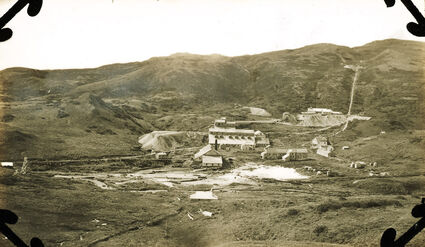
Alaska State Library – Historical Collections
Between 1886 and 1922, the Apollo-Sitka mine on Unga Island produced roughly 150,000 ounces of gold from oxide ore grading 10 g/t gold.
Redstar Gold Corp. announced completion of the 2019 exploration program at the company's Unga epithermal gold-silver project. The program included geochemical and geophysical surveys at several targets, including the projected extensions of known high grade mineralization at Apollo, Sitka and Aquila vein systems on Unga Island, and the Suzy-Rhodo and SoWhat veins along with the Propalof trend on Popof Island. Ground radiometric surveys indicate there is a strong correlation between radiometric results and prospective mineral extensions of the Apollo-Sitka mine, helping the company trace the system's extensions under covered areas. Between 1886 and 1922 the mine produced approximately 150,000 ounces of gold from oxide ore grading 10 grams of gold per metric ton. No attempt was made to mine multi-gram sulfide ores using the relatively crude stamp mill in operation at the time. Assays are pending from the 2019 field programs.


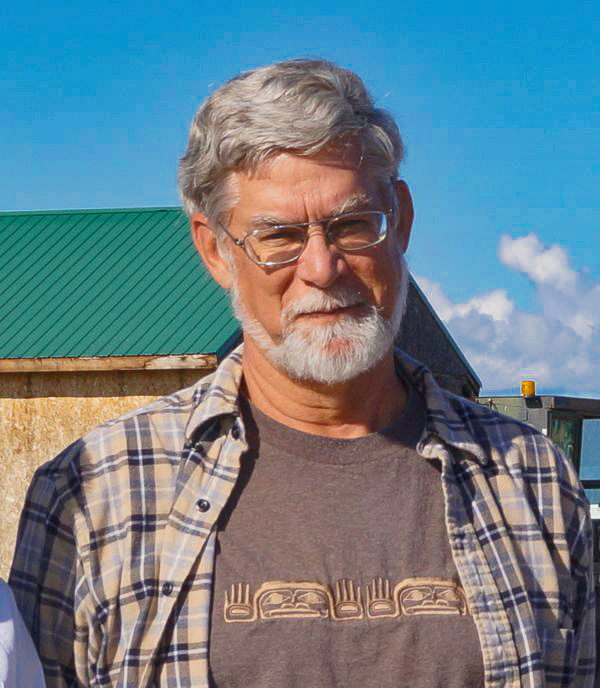





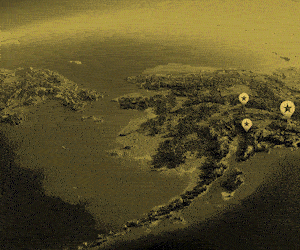
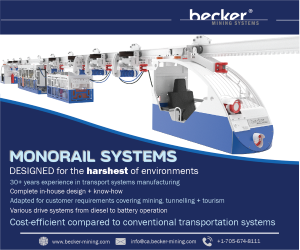
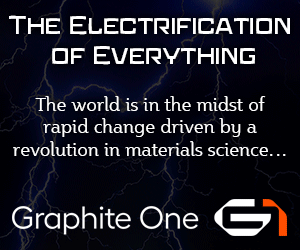
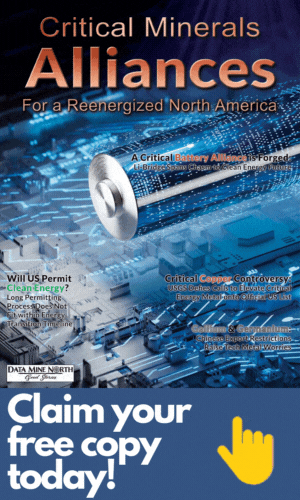

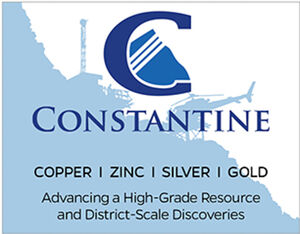




Reader Comments(0)